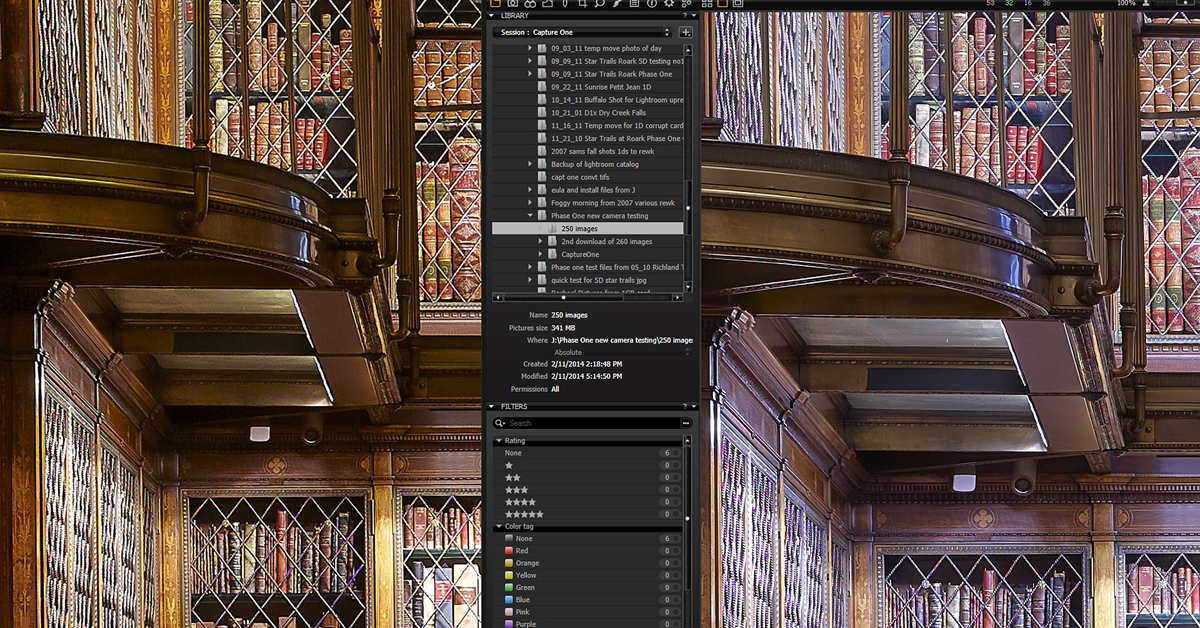Over the past week Digital Transitions , my Phase One dealer based out of New York, NY, has been doing some series comparison testing of the IQ250 and IQ260 with various tech camera lenses. The scene was the Morgan Library Room in New York City. This was an indoor test with very difficult lighting and no flash or strobes were used. Digital Transitions (DT) used a series of different tech camera lenses on both the IQ250 and IQ260, at 50MP and 60MP respectively. These tests included shifting at 0 rise and then shifting with various degrees of rise. I only looked at the images that were shifted at zero rise as I felt that was closest to the work I do. Here is link to the DT blog where their testing was reported: DT Tech Camera Testing
The results were very impressive when comparing just the IQ260 and IQ250 and I have published an article on my website which goes into much more detail and my observations from looking at just the images from the 32mm Rodenstock, it’s very apparent that the IQ250 is going to have much greater dynamic range than the IQ260, even though the IQ260 is a larger chip, with larger photocells. The IQ250 is a 5.3 micron back and the IQ260 is 6.0 micron, and I had hoped to see a bit more room coming from the IQ260. You can read more details here: Impressive results from IQ250 low light testing.
On shifts it quickly became obvious that the IQ260 just could handle the shifts without excessive noise. The noise was so great in fact on the left shift that most of image captured was destroyed by noise. Whereas the IQ250 image showed fine details of fabric on the large room partition that is a large majority of the left shift image. But it’s not just shifts as you can clearly see much more detail extending into the shadows on the center image also. Features like wood grain and patina of metal just really start to stand out better on the IQ250. The IQ260 also had a much bigger issue with aliasing and I point to areas of this in my article.
As the owner of a IQ260, I was impressed by these results. I already knew the Live View worked and it even works well in low light as test by Alpa and now DT. I had hoped with my investment in a IQ260 that Phase One could somehow work magjc on the the CCD one more time since the IQ260 had a totally new chip. However based on these tests at iso 50 and some I have seen at iso 140 (the being of the long exposure noise for the IQ260, I am not seeing any improvements between the IQ160 and IQ260. I was hoping that the IQ260 would allow for a useable image at iso 400 in the long exposure mode so I would not have to drop down to sensor plus, but so far I have not see that result in my work. The shadows when pushed on a IQ260 pretty much appear to have about the same amount of range as my IQ160 had.
Seeing these results from the IQ250 and knowing just how good the Sony 36MP chip is in the D800, I have to make a decision to stay with the IQ260 or attempt a downgrade to IQ250. I don’t see Sony coming out with another full frame medium format chip anytime this year or early next year. They seem to be working on a 54MP chip for the 35mm camera world as they have announced it and are planning to bring it to the market in 2015. This leaves Dalsa who is Phase One’s main chip supplier, and boy I hope they are looking at these results. If any company is going to bring a full sized CMOS chip to market in 2014 or early 2015, I figure it will Dalsa. But they are also unproven in this space, only have CCDs. Sony has been working on the Exmor processor and their high dynamic range CMOS chips since around 2012 now have a fab process setup so that they can replicate this technology across many fronts.




Recent Comments